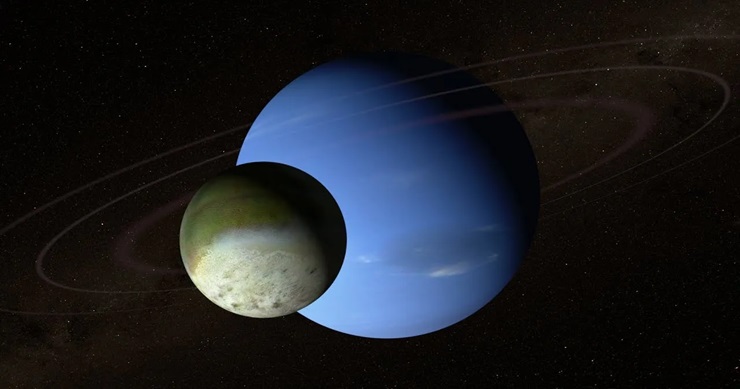Neptune, the outermost planet in our solar system, has only been visited by one spacecraft, the Voyager 2 probe, over 40 years ago. Despite interest from planetary scientists, the planet’s extreme distance makes an orbiter or lander mission virtually impossible with current technology. However, a radical new idea proposes using the thin atmosphere of Neptune’s largest moon, Triton, to capture a spacecraft and place it into orbit around the planet.
The concept, detailed in a paper on the preprint database arXiv, suggests using a device similar to NASA’s Low-Earth Orbit Flight Test of an Inflatable Decelerator (LOFTID). LOFTID is an inflatable shield designed to protect a spacecraft as it descends through Earth’s atmosphere and slow it down to prevent a crash upon landing. The researchers propose aiming a future Neptune orbiter at Triton and using a LOFTID-like apparatus, known as an aeroshell, to slow the spacecraft.
Despite Triton’s atmosphere having less than 1/70,000 the air pressure of Earth’s, the researchers found it could sufficiently slow a spacecraft and allow it to enter into a captured orbit around Neptune. Adjusting the angle of the aeroshell could fine-tune the orbiter’s course and alignment. To achieve this, the orbiter would need to get as low as 6 miles above Triton’s surface, a feat considered relatively low-risk due to the moon’s lack of large mountain ranges.
The researchers estimate that using this aeroshell technique, a mission to Neptune could take as little as 15 years, significantly shorter than any other current mission ideas. Additionally, this approach would provide an up-close view of Triton, one of the strangest objects in the solar system and likely a captured Kuiper Belt object, offering further scientific insights.
Key Takeaways:
- Despite the Voyager 2 probe’s brief encounter with Neptune over 40 years ago, no other spacecraft has visited or orbited the distant planet due to technological limitations and the significant distance from Earth.
- Researchers have proposed a new method to overcome the challenges of reaching Neptune by using an inflatable shield, similar to NASA’s Low-Earth Orbit Flight Test of an Inflatable Decelerator (LOFTID), to slow a spacecraft in the thin atmosphere of Neptune’s largest moon, Triton.
- This innovative approach could potentially reduce a mission to Neptune to around 15 years, significantly less than current methods, and would provide a unique opportunity to explore Triton, one of the solar system’s most unusual objects.
“The researchers proposed to aim a future Neptune orbiter at Triton and use a LOFTID-like apparatus, known as an aeroshell, to slow the spacecraft. They found that the atmosphere of Triton, despite having less than 1/70,000 the air pressure of Earth’s atmosphere, could sufficiently slow a spacecraft and allow it to enter into a captured orbit around Neptune. Additionally, they could change the angle of the aeroshell to tweak the orbiter’s alignment and fine-tune the course to get it into the perfect orbit.”
More details: here


Leave a Reply